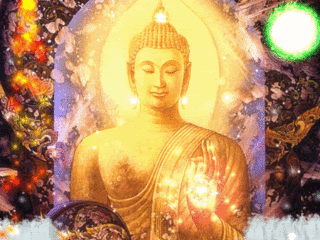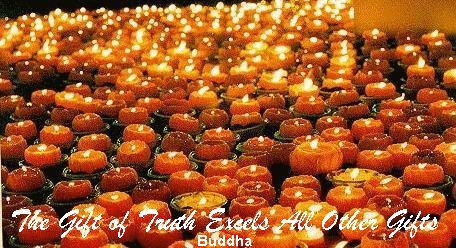Posted by: site admin @ 4:14 am
Social Media propagates December 3rd as Major religions in the world
grows Dwarf fruits










 & vegetables
& vegetables 





























 Plants
Plants  in pots
in pots 
 To live like free birds
To live like free birds 

 for Hunger on Good Earth and SPACE along with Meditative Mindful Swimming
for Hunger on Good Earth and SPACE along with Meditative Mindful Swimming  to Attain Eternal Bliss by Eternal,Glorified,Friendly,
to Attain Eternal Bliss by Eternal,Glorified,Friendly, from Christianity,Islam, Buddhism,Judaism,Hinduism,
from Christianity,Islam, Buddhism,Judaism,Hinduism,Eternal Glorified Friendly Benevolent Compassionate AWAKENED ONE’s UNIVERSE IS WITHIN YOU.



bodhisatta: [bodhi+satta]
The
term is used by the Buddha in the suttas to refer to himself at a time
prior to his awakening (bodhi). The word may have been used originally
only in connection with the last life of the Buddha himself, in such
contexts as “in the days before my Enlightenment, when as yet I was only
a Bodhisatta”, although some suttas use the term to refer to any person
destined to become a Buddha. However, as we will see, there are
reasonable suspiscions that the latter, despite their inclusion in the
Pali Canon, are late productions, reflecting major trends in the
historical evolution of Buddhism in the centuries after the Buddha’s
death.

The first type of sutta in which the term bodhisatta occurs is when the
Buddha tells the story of his various trials and errors before his
awakening: MN 26, 36, 85, 100.
|
|
Before my awakening, when I was still unawakened but an awakened-to-be—I thought: |
|
|
|
|
Before my awakening, when I was still |
|
Then there is a series of suttas where he searched the gratification (assāda), the danger or drawback (ādīnava) and the escape or emancipation (nissaraṇa) of various phenomena: kāma (MN 14), the four material dhātus (SN 14.31), the five khandhas (SN 22.26), the six senses (SN 35.13) and their respective objects (SN 35.14), vedanā specifically (SN 36.24), the world (loka) in general (AN 3.104). |
|
“pubbeva me, bhikkhave, sambodhā anabhisambuddhassa bodhisattasseva |
“Bhikkhus, before my awakening, when I was still unawakened but an awakened-to-be, I |
|
|
|
“mayhampi kho, brāhmaṇa, pubbeva sambodhā anabhisambuddhassa bodhisattasseva |
Before my awakening, when I was still unawakened but an awakened-to-be, I too thought, |
|
|
|
“pubbeva me, bhikkhave, sambodhā anabhisambuddhassa bodhisattasseva |
|
At SN 54.8, the Buddha mentions his practice of ānāpānassati before his awakening; at AN 5.68, he mentions his practice of iddhipādas. At SN 35.100 (or 117) he recounts noticing ‘My
mind might often stray towards the five kinds of sensual stimulation
that I formerly
experienced’ (yeme pañca kāmaguṇā cetaso samphuṭṭhapubbā atītā niruddhā
vipariṇatā, tatra me cittaṃ bahulaṃ gacchamānaṃ gaccheyya paccuppannesu
vā appaṃ vā anāgatesu).
At AN 5.196, the Buddha recalls five dreams that he had before his awakening.
In all the above instances, which make up the vast majority of the suttas where the expression bodhisatta
occurs, the reference is made to the Buddha in his last existence,
before his awakening, and these suttas may be considered genuine or of
early origin. In contrast, there is also a class of suttas that develop
the mythology of the Buddhas, and where stories are told about what
happened to a previous incarnation of the Buddha or of another, earlier
Buddha, with mentions of worldwide supernatural events. As we will see,
the latter may be considered less genuine and of later origin.
Indeed, we know that historically, there has been a
shift in the Buddhist litterature, reflected in the Kathāvatthu. N. Dutt
observes, in ‘Buddhist Sects in India’ (p221) that during the period of
‘early or pure hinayāna Buddhism (circa 450 to 350 B.C.) (…) the
account of the
Life of Buddha usually commenced from the time of Prince
Siddhartha’s retirement to his attainment of Bodhi with occasional
references to his previous existences, as in the Mahāgovinda-sutta or
Mahāsudassana-sutta. The conception of a
Bodhisattva performing paramis was hazy, if not unknown’.
N. Dutt (p248) contrasts this with the tendencies that appeared during
the period of ‘mixed hinayāna Buddhism (circa 350 to 100 B.C.)’ during
which ‘a
greater interest was created for the laity by popularizing Buddhism
through the Jātakas and Avadānas. (…) Much stress was laid on the
composition of the Jātakas and
Avadānas, and great religious merit was attached to reading,
writing, painting, and carving them. This caught the fancy of
the laity as a means of earning religious merit, and resulted in
many sculptures, some of which only are preserved at Sanchi and
Bharhut. The credit for popularizing the religion through the
Jātakas and Avadānas goes, at the first instance, to the Sarvāstivādins,
and, later, to the Theravādins. (…) The account of the Life of Buddha
commenced not from
the time of Sidhārtha’s retirement but from the first resolution
(pranidhāna) made by Sumedha Brāhmana, and the prophecy
(veyyākarana) made by Dipankara Buddha’.
It should be noted that the Mahasanghikas were also prolific producers of Jātakas.
The fondness of Buddhist laity for Jātakas and other
such mythologic stories has survived to this day in Asian countries and
is still directly observable.
 The first such sutta presenting mythological content is DN 14, Mahāpadāna Sutta: The Great Legend. This
The first such sutta presenting mythological content is DN 14, Mahāpadāna Sutta: The Great Legend. This
refers to the last seven Buddhas, going back ‘ninety-one aeons’ in
time. The life of the Buddha Vipassi at that remote period is told in
terms similar to early versions of the life of Gotama. All Buddhas go
through the same experiences in their last earthly life.
Govind Chandra Pande, in his book ‘Studies in the
Origins of Buddhism’ (p94), notes about this sutta that ‘a change of
atmosphere is unmistakable’ compared to DN 13, which he classifies as
‘early’.
‘The lives of the Buddha follow an unvarying archetype; all their
course is but the manifestation of eternal norms (Dhammatā). Already the
list of previous Buddhas has enlarged to six; and the thirty-two marks
of greatness are mentioned in detail. The title itself of the sutta
(Mahāpadāna) suggests its lateness. The ‘apadānas’ became a popular
genre later on, but the very word, in this meaning, is not early’.
Pande explains further, on p29:
‘The most far reaching theological trend [after 350 B.C.] was
the apotheosis of Buddha. The idea of a being incomparably superior to
all creatures, including gods, and from time to time incarnating,
actually or apparently, according to a fixed norm (Dhammatā) solely out
of compassion, is without a previous parallel. It is quite foreign to
the earliest texts and must have developped gradually. (…) The mention
of previous Buddhas (like Sikhī), of future Buddhas (like Metteyya), of
the “bodhisatta”, of the Pacceka-Buddha, of the “birth miracles” and
the narrative of the life of the Buddha as governed by “Dhammatā” -
these, then, emerge as late characteristics. (…) There was also the
growth of the physiognomical dogma of the thirty-two
“Mahāpurisalakkhaṇas” [marks of a great man] (these are declared a Brahmanic doctrine in DN 3)’.
So we may conclude with sufficient confidence that DN
14 was composed at a late period, most probably at least a century
after the Buddha’s death, and dismiss it in the context of this
Glossary.
 The second sutta presenting mythological content is MN 123: Acchariya-abbhūta Sutta: Wonderful and Marvellous. At a
The second sutta presenting mythological content is MN 123: Acchariya-abbhūta Sutta: Wonderful and Marvellous. At a
gathering of bhikkhus the venerable Ānanda recounts the
wonderful and marvellous events that preceded and attended
the birth of the Buddha.
Pande notes, in ‘Studies in the Origins of Buddhism’ (p140): ‘Sutta
123 describes a large number of “abbhuta-dhammas” which must accompany
the ante-natal preparations and the final birth of a “Bodhisatta”. The
sutta obviously belongs to a period when the Buddha was a full fledged
god, or rather, more, and his birth a miraculous descent of the divine.’
As for DN 14, we may conclude with sufficient
confidence that this sutta was composed at a late period and should be
dismissed in the context of this Glossary.
 AN 4.127 and AN 8.70 share a lot of textual
AN 4.127 and AN 8.70 share a lot of textual
material with DN 14 and MN 123 and may equally be dismissed on the
ground that they belong to the same period. Finally, Ud 5.2 is
classified by Chande (p74) as late, since it ‘presupposes a well
developped Buddhology’ (sign of lateness). Indeed, Ud 5.2 ‘describes how
the mothers of the Bodhisattas must be shortlived’.
For further analysis, see Bhikkhu Anālayo’s ‘The Genesis of the Bodhisattva Ideal’.

